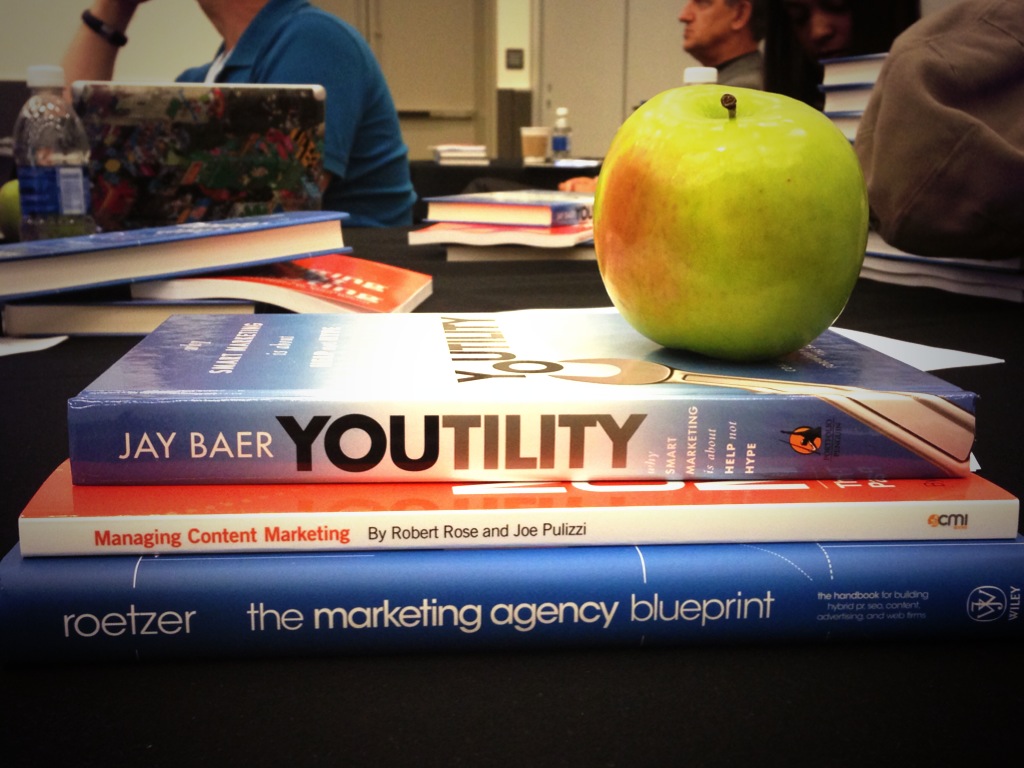Our Top 5 Marketing Strategy Lessons from Content Marketing World, Part 2
In a previous post, my colleague Katherine Kilpatrick discussed our takeaways from the Convince & Convert Content Connection that we attended as part of the 2013 Content Marketing World Conference. Katherine’s post shared the first two lessons in our top five takeaways form the workshop. Today, I will round out that list with the rest of our lessons learned.
Voilà…
3. We should keep The Stages of Change and The Consumer Activation Model in mind.
The goal of marketing is to change the behavior of consumers – a goal that we can, at times, forget. Something else we tend to forget is that humans have a natural resistance to change, making that goal even harder to realize.
The transtheoretical model, which is also known as the “stages of change,” explains the five stages that people go through when trying to change their behavior. While the model is frequently used in the healthcare and pharmaceutical industries, it is also meaningful as a way to craft marketing and communications programs.
While at Content Marketing World, Tamsen and Tom Webster expanded on this concept through their Consumer Activation Model for Content. Their model pairs the stages of change with what we know about how consumers make purchases, giving a new framework for content development. Reaching consumers in each stage of their decision-making process is key to this new era of content marketing.
4. Content marketing’s “first influencers” are the organization’s employees.
Who’s the most important audience for your clients’ content? Most agencies and professionals will answer with “potential customers.” However, that’s not true. During our workshop, we received the imperative reminder that an organization’s employees are the first influencers for content marketing. Thus, the most important audiences for content, in order, are:
- Employees
- Current Customers
- Prospects
Most agencies flip this list, making prospects – and the elusive “online influencer” – the target of marketing programs and neglect altogether employees as the first stop for content. Think of it like this: if the people who work at the organization don’t love the company, then we shouldn’t worry about marketing to prospects, as there is a bigger problem at hand.
5. The future of the agency is transparency.
Transparency between an agency and its clients builds a foundation of trust. Today, with the track-ability of anything happening online, analytics are critical. As the roles of agencies and the specific services they provide start to blur, clients value what they can understand and present to their superiors. Simply put, whichever agency keeps score, wins the client’s dollars.
When it comes to actually keeping score, we must build our program to not just track outputs, but also outcomes. This can be the difference between counting how many bylined articles were placed and how those articles have contributed to new business leads. This distinction is an area that both agencies and their in-house marketing clients often don’t push towards – but it is our future.
If you haven’t already, take a look at Katherine’s post for the first two lessons in this list. Also, check out my colleague Elizabeth Sosnow’s post about her favorite “grenades” from the day.
Connect with Megan:
Phone: 212.840.1661
Email: Megan@blissintegrated.com
Twitter: @MeganTuckPR
